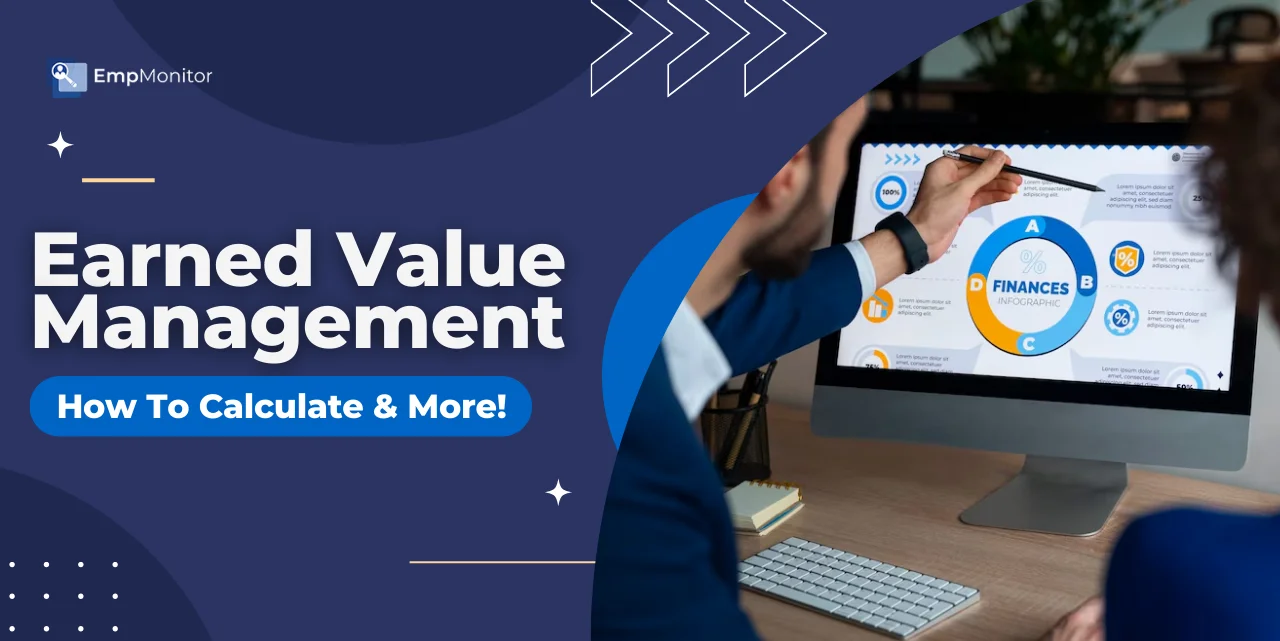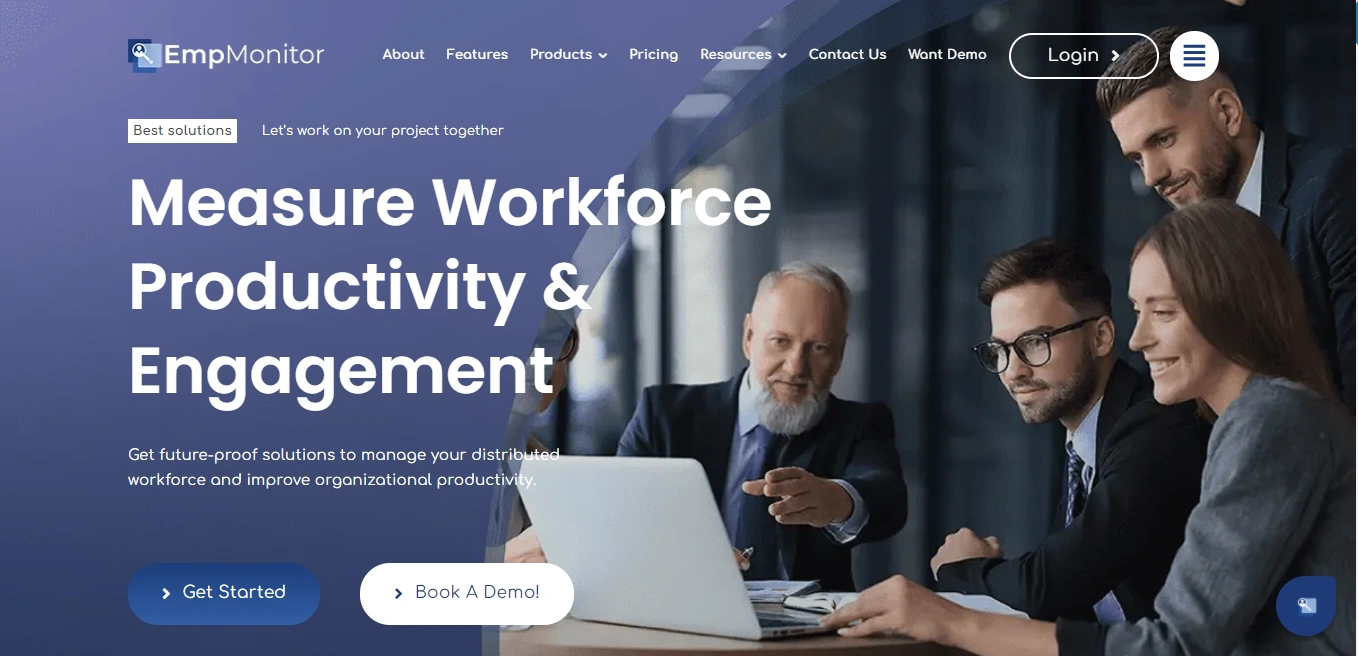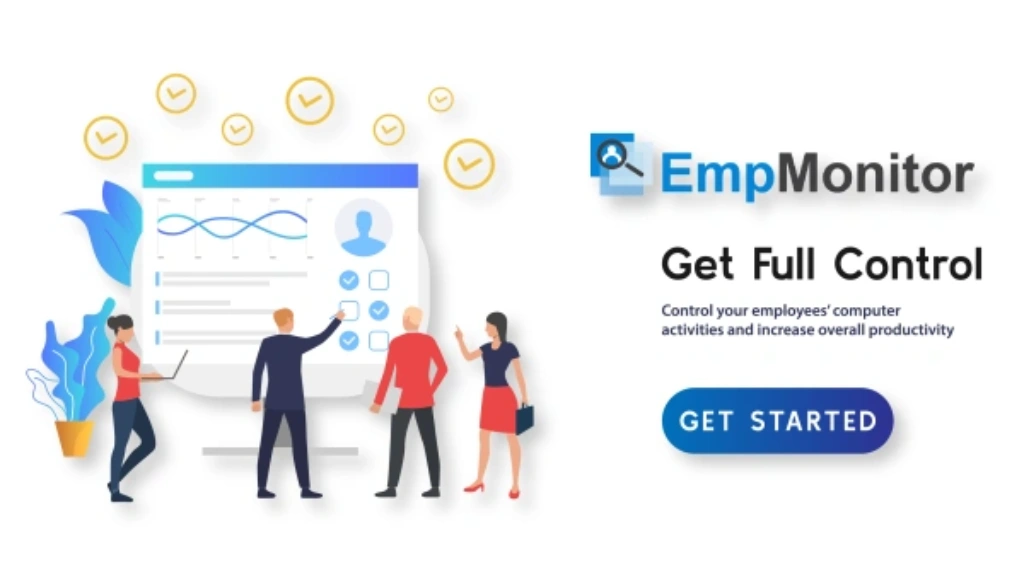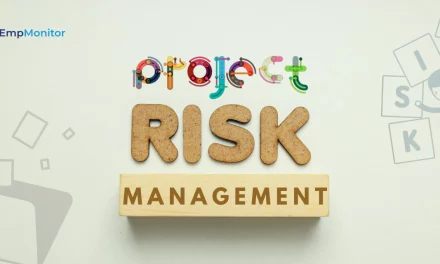“You can’t manage what you don’t measure.”
Imagine investing time, budget, and resources into a project—only to realize halfway through that it’s over budget and behind schedule. That’s where earned value management (EVM) comes in. It helps employers, managers, and executives track project performance with actual data, not guesswork.
Are you confident that your projects are on track? Or do you often face budget overruns and missed deadlines? EVM provides a structured approach to measure progress, predict outcomes, and take corrective actions before it’s too late.
In this blog, we’ll understand how to calculate EV management and use it to improve efficiency and profitability. Let’s get into the key metrics that bring better decision-making.
In a hurry? Listen to the blog instead!
What Is Earned Value Management?
EVM is a structured method for assessing project performance and progress. It enables project managers to make data-driven decisions throughout the project lifecycle. While various approaches exist to track progress, many rely on subjective estimates, setting task completion percentages without clear benchmarks.
The issue with this approach is inconsistency—different individuals may interpret progress differently, often influenced by conflicting priorities. To avoid this, organizations need a standardized, proven methodology like EVM to ensure accuracy and transparency.
It integrates scope, schedule, and cost. Earned value management provides a clear, objective project health assessment. It is especially valuable for large-scale projects where accurate forecasting is essential.
Using key performance indices like the Cost Performance Index (CPI) and Schedule Performance Index (SPI), EVM highlights whether a project is ahead or behind expectations. A CPI or SPI above 1 indicates efficiency, while values below one signal potential issues.
For businesses seeking enhanced project monitoring, tools like EmpMonitor offer advanced tracking capabilities, ensuring better decision-making and improved project outcomes.
Why Earned Value Management Matters?
In project management, keeping track of time, cost, and progress is essential. Many projects fail because managers lack a comprehensible way to measure performance. Earned value management (EVM) provides a structured approach to tracking and controlling projects, ensuring that budgets and schedules stay on track. Here’s why it is crucial for employers, managers, and higher management authorities:
1. Accurate Performance Measurement
EVM offers an objective method to measure project progress. It uses three key values:
Planned Value (PV): The estimated cost of planned work.
Earned Value (EV): The actual value of work completed.
Actual Cost (AC): The real cost incurred for the completed work.
By comparing these values, project managers can see whether the project is ahead, behind, or on schedule. It prevents subjective assessments and ensures accountability among team members and stakeholders.
2. Early Problem Identification
One of the substantial advantages of earned value management is its ability to detect issues early. The project is behind schedule if the EV is lower than the PV. If the AC is higher than the EV, it indicates cost overruns. Recognizing these gaps in real time allows managers to take corrective action before problems become critical.
3. Better Cost and Schedule Control
EVM helps project managers make accurate forecasts and manage multiple projects. They can estimate the total project cost and completion date by analyzing current performance. It helps in:
- Allocating resources efficiently.
- Adjusting schedules to avoid delays.
- Managing budgets effectively to prevent overspending.
With earned value management, managers can make informed decisions rather than reacting to issues at the last moment.
4. Clear and Effective Communication
EVM provides a structured way to communicate project progress. Instead of vague updates, managers can present specific performance data to executives, clients, and team members. This transparency builds trust and helps stakeholders make informed decisions.
5. Enhanced Risk Management
Each project has risks, such as cost overruns, delays, or scope changes. Earned value management helps identify potential risks by analyzing planned and actual performance variances. When managers detect risks early, they can:
- Allocate resources efficiently.
- Adjust project plans to minimize impact.
- Prevent financial losses and delays.
6. Objective Performance Evaluation
EVM allows managers to evaluate team performance based on measurable data. Instead of subjective assessments, employees are judged on actual work completed against planned targets. It motivates teams to stay on track and rewards efficiency.
For companies managing complex projects, EVM is essential for ensuring success. It helps prevent overruns and delays by tracking costs, schedules, and progress with accurate data. Businesses looking for advanced project tracking solutions can benefit from EmpMonitor, which offers real-time monitoring and performance evaluation, making EVM project management more efficient.
EmpMonitor- Advanced Employee Monitoring Software
EmpMonitor is an advanced employee monitoring and productivity management software designed for businesses of all sizes. It helps employers track employee activity, analyze performance, ensure data security, and optimize workforce efficiency. Here are the key features of EmpMonitor:
- Employee Activity Tracking
Monitor employees’ active and idle hours, application usage, and website visits to ensure productivity and compliance.
- Time Tracking & Attendance Management
Automate attendance tracking with real-time login/logout records, shift scheduling, and biometric integration.
- Project & Task Management
Assign, track, and analyze project progress with built-in task management tools to improve team collaboration.
- Screen Monitoring & Screenshots
EmpMonitor capture periodic screenshots and screen activity to maintain transparency and prevent unproductive behavior.
- Insider Threat Detection
Detect suspicious activities, unauthorized access, and potential security threats with acute alerts and real-time monitoring.
- Productivity Reports & Analytics
Generate detailed reports on employee performance, work trends, and team efficiency. These reports help you to make data-driven decisions.
- Cloud-Based & Remote Access
Monitor employee activities from anywhere with a secure, cloud-based platform ideal for remote and hybrid teams.
EmpMonitor empowers businesses to enhance productivity, improve security, and streamline workforce management with intuitive and scalable features. Whether you manage an in-office, remote, or hybrid team, this tool provides complete visibility into work activities, helping you maximize efficiency and maintain compliance.
Key Components of Earned Value Management
In project management, tracking progress with accurate data is essential for success. Earned value management (EVM) provides a structured way to measure performance and control costs. Understanding its key components helps employers, managers, and decision-makers make informed choices.
1. Planned Value (PV)
Planned Value (PV), or the Budgeted Cost of Work Scheduled (BCWS), represents the approved budget for scheduled tasks. It defines how much should be spent by a specific milestone. PV serves as a benchmark to compare actual progress with the initial plan. It helps project managers determine if the project aligns with its budget and timeline.
2. Earned Value (EV)
Earned Value (EV), or the Budgeted Cost of Work Performed (BCWP), measures the value of completed tasks at a given time. It indicates how much work has been done compared to the budget. Calculate EV by multiplying the percentage of completed work by the total budget.
Managers can see whether the project is on track or falling behind by comparing EVs with PV. Earned value management helps ensure that one can use resources effectively.
3. Actual Cost (AC)
Actual Cost (AC), or the Actual Cost of Work Performed (ACWP), includes all expenses incurred for completed work. It covers labor, materials, and overhead costs. Project managers can detect cost overruns and inefficiencies by comparing AC with PV and EV. AC is a critical factor in cost control and financial planning.
4. Cost Performance Index (CPI)
The Cost Performance Index (CPI) is a key metric in earned value management that measures cost efficiency. You can calculate as:
CPI = EV / AC
CPI > 1: The project is under budget.
CPI < 1: The project exceeds the budget.
CPI = 1: The project is on budget.
Tracking CPI allows managers to take corrective actions and prevent unnecessary expenses.
5. Schedule Performance Index (SPI)
The Schedule Performance Index (SPI) evaluates whether the project is progressing. You can calculate using the formula:
SPI = EV / PV
SPI > 1: The project is ahead of schedule.
SPI < 1: The project is behind schedule.
SPI = 1: The project is on schedule.
By monitoring SPI, managers can identify delays early and adjust schedules accordingly. Earned value management ensures project timelines remain realistic and achievable.
6. Variance Analysis
Variance analysis compares planned and actual performance to detect deviations. Two key types of variances are:
Cost Variance (CV) = EV – AC (Positive CV = cost savings)
Schedule Variance (SV) = EV – PV (Positive SV = ahead of schedule)
This analysis helps project managers understand where the project is over budget or behind
schedule. Identifying variances early prevents long-term setbacks.
7. Performance Index Thresholds
Setting performance thresholds is crucial in earned value management. Companies define acceptable limits for cost and schedule performance. For example, if CPI drops below a certain level, managers can trigger an internal review to control expenses. This proactive approach minimizes risks and enhances efficiency.
Understanding the key components of earned value management helps businesses maintain control over projects. With data-driven insights, managers can optimize costs, schedules, and performance. Tools like EmpMonitor provide advanced tracking and reporting, ensuring smooth project execution and improved decision-making.
How To Calculate Earned Value?
To understand earned value calculation in project management, let’s consider a real-world scenario.
A construction firm plans to build a new office building. The total project budget, or Budget at Completion (BAC), is $1,000,000, with an organized duration of 12 months. By the end of the 6th month, the firm expects to complete 50% of the work. It sets the Planned Value (PV) at:
PV = $1,000,000 × 50% = $500,000
However, an evaluation reveals that only 40% of the work is finished. This results in the Earned Value (EV):
EV = $1,000,000 × 40% = $400,000
Meanwhile, the firm has already spent $600,000. This amount represents the Actual Cost (AC).
-
Evaluating Project Performance
Using earned value management, we calculate key performance indicators.
Cost Performance Index (CPI)
CPI measures cost efficiency:
CPI = EV ÷ AC = $400,000 ÷ $600,000 = 0.67
Since CPI is less than 1, the project is over budget.
Schedule Performance Index (SPI)
SPI evaluates the project’s schedule efficiency:
SPI = EV ÷ PV = $400,000 ÷ $500,000 = 0.8
An SPI below 1 indicates that the project is behind schedule. Earned value management helps managers identify these inefficiencies early.
-
Variance Analysis
Cost Variance (CV)
CV highlights cost deviations:
CV = EV – AC = $400,000 – $600,000 = -$200,000
The negative value confirms that the project is overspending.
Schedule Variance (SV)
SV measures schedule deviations:
SV = EV – PV = $400,000 – $500,000 = -$100,000
A negative SV means a delayed project.
-
Taking Corrective Action
These calculations show that the project is over budget and behind schedule. Earned value management provides clear insights, helping managers detect inefficiencies, control costs, and adjust timelines. By acting early, businesses can steer projects back on track, ensuring timely and cost-effective completion.
Now, let’s explore the key roles involved in the EVA process.
Read More
Project Baseline: What It Is, Why It Matters, And How To Set It Up
How to Manage Multiple Projects Effectively – 9 Powerful Tips
Key Participants In The Earned Value Analysis Process
The earned value analysis (EVA) process relies on key participants who monitor project performance to ensure success. Each role plays a crucial part in maintaining accurate tracking and decision-making. Let’s explore these key participants:
Project Manager
The project manager oversees the entire EVA process. They define the project scope, budget, and schedule project baselines while ensuring accurate tracking of key metrics such as planned value (PV), earned value (EV), and actual cost (AC).
By analyzing these figures, they identify cost and schedule variances, implement corrective actions, and keep stakeholders informed. Earned value management helps them maintain control over project performance.
Project Team Members
Team members execute tasks, track progress, and report completed work. They provide real-time updates on task completion, helping project managers assess performance against planned baselines. Their responsibility includes identifying delays and communicating issues early, ensuring that earned value management maintains project alignment.
Project Control Officer/Analyst
Project control officers collect, analyze, and report critical data for earned value analysis. They
establish and update performance baselines, track cost and schedule metrics like CPI and SPI, and conduct variance analysis.
Their reports help project managers understand project deviations and make informed decisions to improve efficiency. The earned value management system ensures these metrics align with the project objectives.
Finance/Accounting Team
The finance or accounting team manages the project’s actual costs. They ensure that expenses are recorded correctly and compare them with budgeted figures. They also forecast future costs (EAC) and flag potential overruns. Earned value management allows them to maintain financial transparency and control.
Stakeholders/Project Sponsors
Project stakeholders and sponsors assess EVA reports to evaluate progress. They ensure the project aligns with business goals, approve necessary adjustments, and provide strategic direction. Their input ensures that earned value management remains a valuable tool for driving project success.
Organizations can effectively implement earned value management to improve cost control, schedule performance, and overall project efficiency involving these key participants.
Before Summing Up
Earned Value Management (EVM) is a valuable approach for tracking project performance, controlling costs, and ensuring timely delivery. By analyzing key metrics like Planned Value (PV), Earned Value (EV), and Actual Cost (AC), businesses can identify inefficiencies and take corrective actions. This method helps employers and managers improve decision-making, optimize resources, and minimize risks.
Tools like EmpMonitor offer real-time insights, automated reports, and detailed analytics to enhance project tracking and workforce productivity. With the right earned value management system, organizations can maintain better control over their operations and drive success. Whether managing small teams or large-scale projects, implementing EVM ensures efficiency, accountability, and improved financial outcomes.
Frequently Asked Questions
Que: Explain the concept of Earned value management
EVM goes beyond a simple project management technique—it is a comprehensive framework that ensures effective cost and schedule control. Rather than being a standalone process, EVM encompasses a set of 32 guidelines that outline the essential requirements for a contractor’s management system. These guidelines help organizations track progress, measure performance, and maintain financial accountability throughout a project’s lifecycle.
Que: What are the objectives of EVM?
The primary goal of EVM is to enhance project efficiency and accuracy by providing a clear framework for cost and schedule control. It eliminates uncertainties caused by ambiguous or incomplete data, ensuring precise performance measurement. EVM also streamlines progress tracking, reduces the time required for evaluating project status, and ensures that financial and resource allocations align with project objectives.
Que: What are the essential Features of an Earned Value Management (EVM) System?
A well-structured EVM system includes key components that ensure effective project monitoring and control. These essential features are:
- Scope Management – Defines project deliverables and ensures alignment with objectives.
- Cost Management – Tracks budgets, expenditures, and financial performance.
- Schedule and Time Management – Monitors project timelines and progress against planned milestones.
- Change Control Procedures – Manages modifications to scope, schedule, and budget to minimize disruptions.















